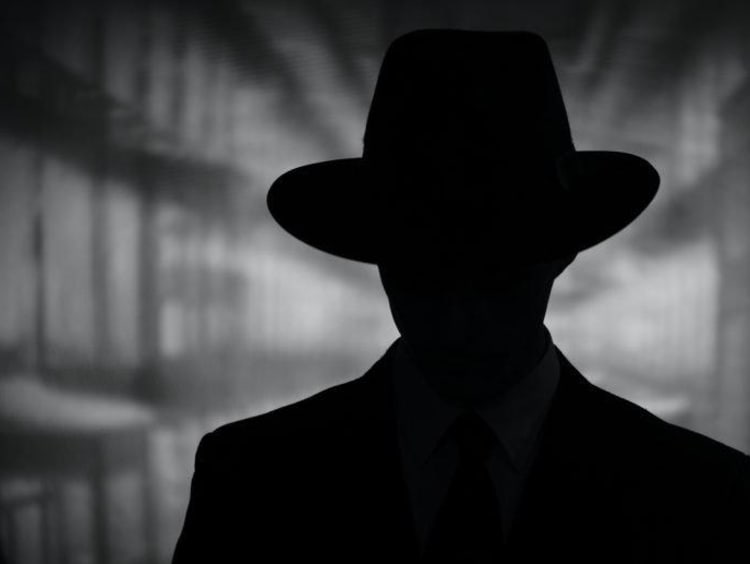Iconic Movie Villains With Antisocial Personality Disorder
Professional Writing and Psychology, College of Humanities and Social Sciences

One of Grand Canyon University’s most popular psychology courses is abnormal psychology (PSY-470), in which students study the patterns of mental illnesses and abnormal behaviors. Specific topics include the symptoms, diagnoses and treatment of various psychological syndromes. One mental illness that is frequently seen in popular culture is antisocial personality disorder, likely due to the potential to create a complex, timeless villain that exhibits symptoms of the psychopathic disorder.
Table of Contents:
What is Antisocial Personality Disorder?
The Diagnostic and Statistical Manual of Mental Disorders (DSM), which provides standardized language for the classification of psychiatric disorders, defines antisocial personality disorder (ASPD) as a remorseless, habitual and pervasive disregard for or violation of the rights of others. In some contexts, psychopathy and sociopathy are used interchangeably with ASPD.
ASPD does not use the term “antisocial” in the traditional sense, a definition which is often associated in day-to-day life with people who habitually prefer to stay in their homes rather than go out. In the case of ASPD, the word literally means “against society,” whether it be rules, laws or acceptable behaviors. People with ASPD are often charismatic and superficially charming, possessing a cunning that can be used to quickly analyze people and determine how they can best be manipulated. Some researchers suggest that antisocials are able to switch off their empathy at will, or perhaps do not possess any in the first place.
Hannibal Lecter
“The Silence of the Lambs” immortalized one of the most terrifying villains in cinematic history–Dr. Hannibal Lecter. Both a talented psychiatrist and cannibalistic serial killer, the majority of Lecter’s personality traits and behaviors can be categorized as evidence of ASPD. He can be specifically categorized as a malevolent antisocial due to his striking lack of remorse of guilt. This subtype of ASPD can be seen in other serial killers like Ted Bundy.
When the film’s protagonist, an FBI trainee named Clarice, interacts with Lecter at the beginning of the film, he displays his capacity for deceptive charm in with a greeting that appears courteous. As the conversation progresses, the pretense of politeness begins to slip and his viciousness becomes present through his micro expressions, tone of voice and eventual verbal harassment of Clarice.
Antisocials also tend to have above-average intelligence scores, which is evident in Lecter’s incredible memory and status as a brilliant psychiatrist. He is so intelligent that the film’s protagonist seeks his advice in apprehending another serial killer despite the obvious risks associated with soliciting his help, including him directly threatening her during their first meeting. However, Lecter’s extreme intelligence combined with his antisocial tendencies make him an incredibly dangerous combination of fearlessness, cunning and psychopathic inclinations.
The Joker
Heath Ledger’s version of the Joker in “The Dark Knight” has been lauded as one of the best cinematic performances in history. Ledger himself described his portrayal of the iconic comic book villain as a “psychopathic, mass murdering schizophrenic clown with zero empathy.”
The Joker’s objective in the film is to upset the social order of Gotham through crime. He exhibits dozens of textbook examples of antisocial behavior as he attempts to tear the city to pieces. One of these instances is the string of murders he commits to incite Batman to reveal his identity. This willingness to use human lives as tools to move closer towards his goal shows not only an intense lack of empathy, but an ability to dehumanize those who stand in the way.
Not only does the Joker feel no remorse for his habitual crimes, but, true to his clown-like persona, he takes joy in them. He uses his cunning to find the best way to manipulate Batman out of hiding, his disregard for human rights and passion for anarchy both symptomatic of ASPD.
Alex DeLarge
Unprovoked rampages of “ultraviolence” are characteristic of Alex DeLarge, the main character in Stanley Kubrick’s adaptation of “A Clockwork Orange.” DeLarge takes juvenile delinquency to a new extreme as he and a gang consisting of other sociopathic teenagers commit horrific violent crimes across dystopian Britain.
Due to his unmatched intelligence, DeLarge appointed himself as the leader of his gang. He also possesses a charisma that is shared by both Hannibal Lector and the Joker. Once captured for his crimes, DeLarge is able to endear himself to the prison chaplain and officials with his boyish charm and superficial obedience. This charm and intelligence, when combined with the lack of empathy he shows towards his undeserving victims, signify that DeLarge experiences a form of ASPD.
If you are interested in exploring metal illness and emotional health, as well as serving others in need, consider earning your BS in Psychology from GCU’s interdisciplinary College of Humanities and Social Sciences. Click the Request More Information button at the top of this page to learn more.
References:
American Psychiatric Association. (2013). Diagnostic and Statistical Manual of Mental Disorders. (5th Edition). Washington, DC.
Lyall, Sarah (November 4, 2007). “Movies: In Stetson or Wig, He’s Hard to Pin Down.” The New York Times.
Millon, Theodore (2006). “Personality Subtypes Summary.” The Official Website for Theodore Millon, Ph.D., D.Sc. DICANDRIEN, Inc.
The views and opinions expressed in this article are those of the author’s and do not necessarily reflect the official policy or position of Grand Canyon University. Any sources cited were accurate as of the publish date.


